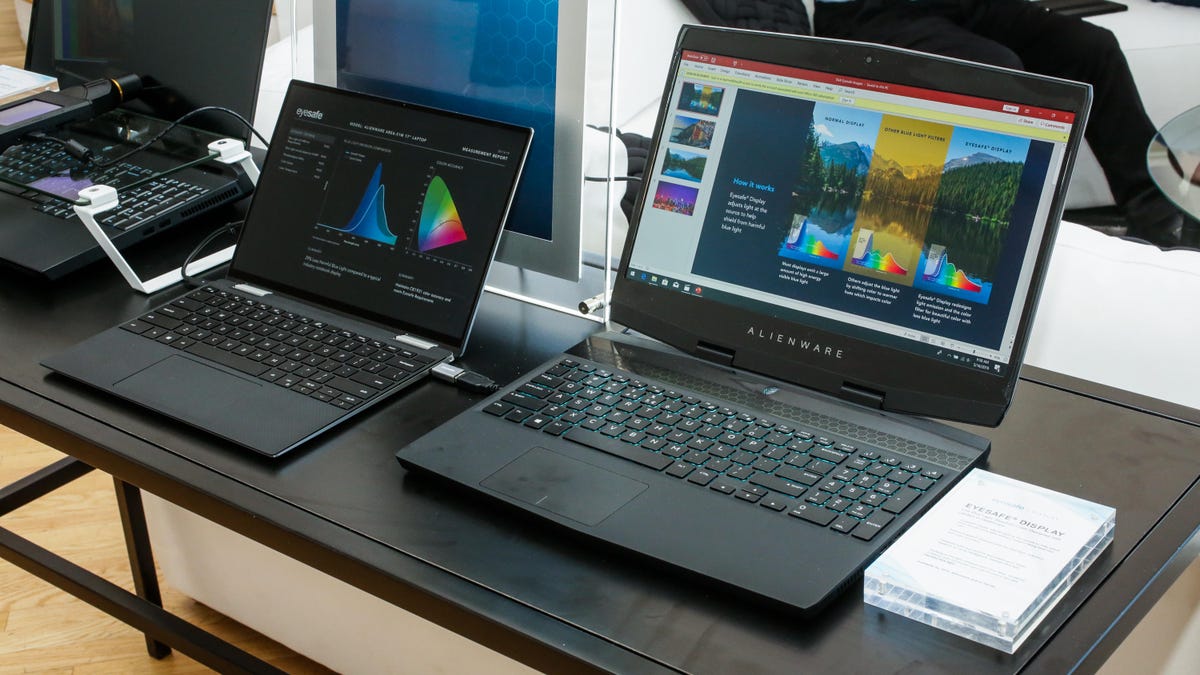Dell and EyeSafe partner to tackle the blue light blues
EyeSafe's blue-light defeating screen technology makes its laptop debut in the Dell laptops announced at Computex 2019.

As bad as excessive exposure to artificial blue-light wavelengths may be, the current mainstream fix of shifting the screen display to yellow doesn't cut it. Even if your eyes find it restful, it can be aesthetically unpleasant to look at and can be useless if you're streaming video, photo editing, or performing other tasks that require accurate colors. Dell's first out of the gate to incorporate EyeSafe's standards-compliant blue-light defeating technology, which doesn't resort to wholesale color shifts, in the laptops it announced at Computex 2019.
Samsung recently introduced OLED displays for its phones that emit less light in the 415-455nm wavelength range, but the drawback is that it's a global setting that essentially adds increasing amounts of red/yellow, which makes the blue light less blue -- but it also intensifies the red/yellow/orange part of the spectrum, resulting in a shift in the white point of the display which produces the yellowish color cast we've come to associate with blue-light filters.
By applying an optimal amount of yellow/red, Samsung can balance the shift so that blue light is reduced with a minimal shift in the white point or other colors, maintaining the full DCP-P3 gamut and a white point of roughly 6500K which is the standard white point (daylight) for viewing or working with most content.
EyeSafe won't give specifics about its technology, but it seems like the company works with the display manufacturers to facilitate locally applied adjustments to shift many of the blues towards the warmer end of the spectrum, but leave the rest of the gamut intact. It probably requires specific color characterizations and profiles in order to map original colors to the new gamut, as well as its tuned LEDs and RGB filters, and the company claims it only shifts the white point to about 6200K while reducing blue light by 29%.
Unlike Samsung's technology, EyeSafe works with both IPS and OLED panels, which broadens its scope to a wider range of displays at a bigger variety of sizes and prices. However, it also only currently works properly to maintain the relatively small sRGB gamut, which doesn't encompass as much of the blues that the much bigger P3 gamut does.
Dell has an exclusive on the EyeSafe technology until the end of the year; after that, the company plans to expand to more partners.

